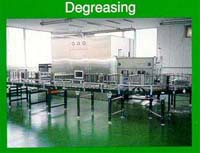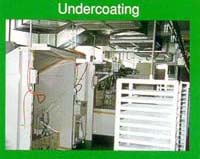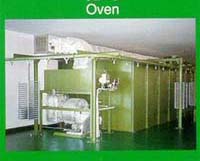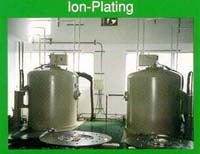 |
 |
 |
 |
 |
|
|
 |
Known EMI-shielding techniques
are electroless plating and vacuum metalizing. Electroless plating is a
wet process which affects the environment, and has a great limitation in
masking, while vacuum metalizing provides a thin covering of a metalized
layer.
We have overcome such defects by using high speed radio frequency ion-plating.
According to this method, in the first step, the surface of a molded plastic
item is roughed and oily deposition inhibitors are removed by plasma etching
techniques, thus, the adhesion of the deposited layer to the surface is
extremely enhanced.
|
|
 |
|
|
 |
Certain types of plastics do not need undercoating
because removal of the inhibitors and roughing are a sufficient preparation,
thereby reducing costs.
Successively, vacuum deposition is performed in a plasma atmosphere.
Accordingly, the loci of metallic deposition particles do not become linear,
different from the loci in the vacuum metalizing.
|
|
 |
|
|
 |
| The particles collide with gas molecules
or electrons included in the plasma to be pushed back, so that they travel
in all directions inside a deposition chamber. As a results, the deposition
density increases, and preferred covering can be obtained even when the
processed item has a complicated three-dimensional shape. |
|
 |
|
|
 |
 |
 |
 |
 |
 |
These images are supplied by CBC Ings Co.Ltd.













